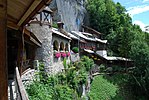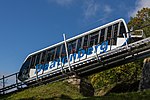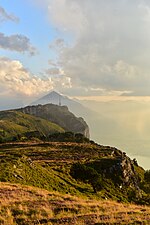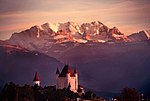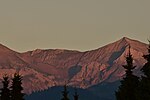Leissigen railway station
BLS railway stationsDisused railway stations in SwitzerlandPages with no open date in Infobox stationRailway stations in the canton of Bern

Leissigen railway station (German: Bahnhof Leissigen) is a closed railway station in the municipality of Leissigen, in the Swiss canton of Bern. It is an intermediate stop on the Lake Thun line. Direct rail service ended with the 2020 timetable change and was replaced with regular bus service between Spiez and Interlaken.
Excerpt from the Wikipedia article Leissigen railway station (License: CC BY-SA 3.0, Authors, Images).Leissigen railway station
Bim Bahnhof,
Geographical coordinates (GPS) Address Nearby Places Show on map
Geographical coordinates (GPS)
| Latitude | Longitude |
|---|---|
| N 46.655 ° | E 7.775 ° |
Address
Bim Bahnhof
Bim Bahnhof
3706
Bern, Switzerland
Open on Google Maps


